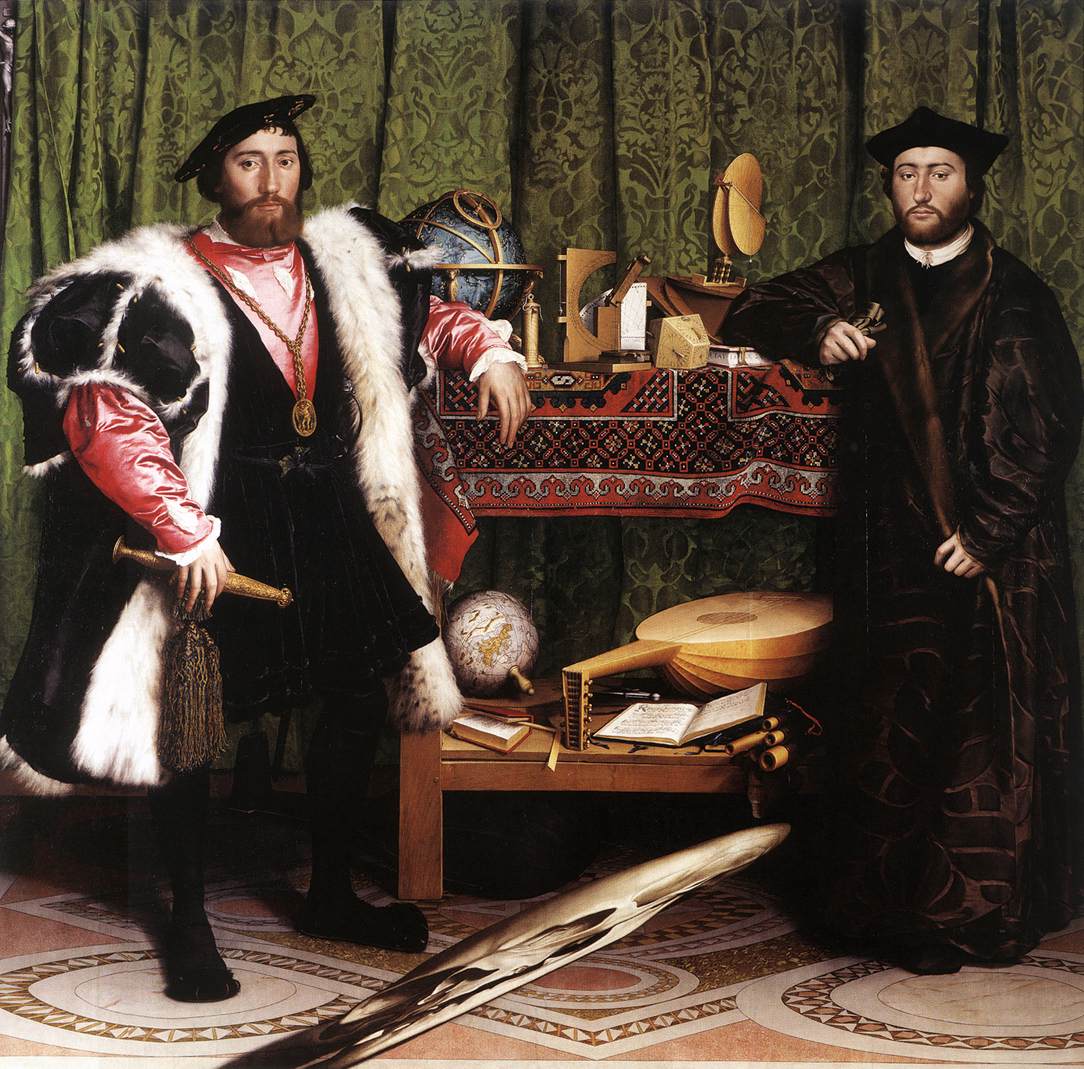 For class I visited the National Gallery where I was able to see many beautiful and fascinating pieces. One that I particularly liked was “The Ambassadors” (1533) by Hans Holbein. The painting contains a still life several meticulously rendered object and is also a double portrait. However, the feature that separates this piece from other paintings is the skewed skull located towards the bottom center of the painting. It is a particularly well-known example of anamorphosis in painting. The two portraits are of two young males, one in secular attire while the other is dressed in clerical clothes. They are both situated by a table which displays open books, two globles (one terrestrial and one celestial) and other worldly objects. The objects are symbols used to link the figures to the age of exploration. The skull is meant to serve as a “memento mori,” a Latin phrase meaning remember you must die and designed to remind the viewer of their mortality. In addition to the basic memento mori (a skull), Holbein uses the “vanitas,” or still life, to explicitly remind people of the vanity of worldly pleasures and goods. Common symbols are musical instruments and books – both are present in the painting. It is possible that the painting is meant to illustrate the existence of the three different levels. The celestial globe – along with other astronomical instruments – on the upper shelf portrays the heavens. On the lower shelf down are books and a musical instrument used to represent the living world. Lastly the skull, rendered in anamorphic perspective, is designed to signify death.
For class I visited the National Gallery where I was able to see many beautiful and fascinating pieces. One that I particularly liked was “The Ambassadors” (1533) by Hans Holbein. The painting contains a still life several meticulously rendered object and is also a double portrait. However, the feature that separates this piece from other paintings is the skewed skull located towards the bottom center of the painting. It is a particularly well-known example of anamorphosis in painting. The two portraits are of two young males, one in secular attire while the other is dressed in clerical clothes. They are both situated by a table which displays open books, two globles (one terrestrial and one celestial) and other worldly objects. The objects are symbols used to link the figures to the age of exploration. The skull is meant to serve as a “memento mori,” a Latin phrase meaning remember you must die and designed to remind the viewer of their mortality. In addition to the basic memento mori (a skull), Holbein uses the “vanitas,” or still life, to explicitly remind people of the vanity of worldly pleasures and goods. Common symbols are musical instruments and books – both are present in the painting. It is possible that the painting is meant to illustrate the existence of the three different levels. The celestial globe – along with other astronomical instruments – on the upper shelf portrays the heavens. On the lower shelf down are books and a musical instrument used to represent the living world. Lastly the skull, rendered in anamorphic perspective, is designed to signify death.When view over the shoulder from the right hand side of the paint, the image of a skull becomes unmistakable. The underlining message of this piece is that death is inevitable. Humans are mortal being, whether or not they choose to believe so. When the time comes, wealth and power can do nothing to prevent the inevitable fate of all beings.
No comments:
Post a Comment